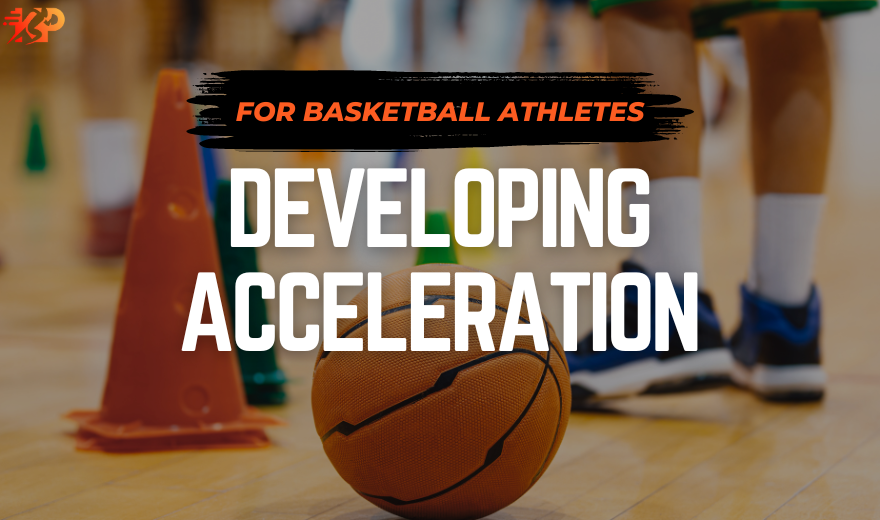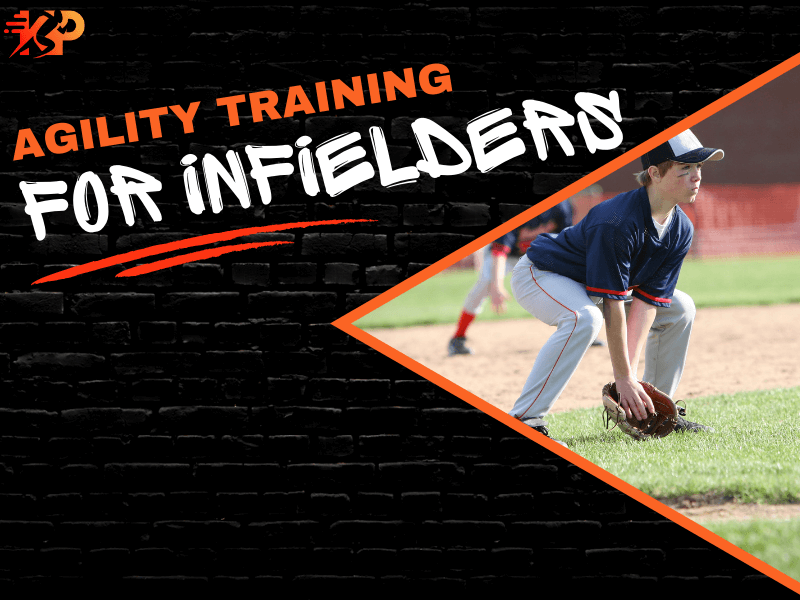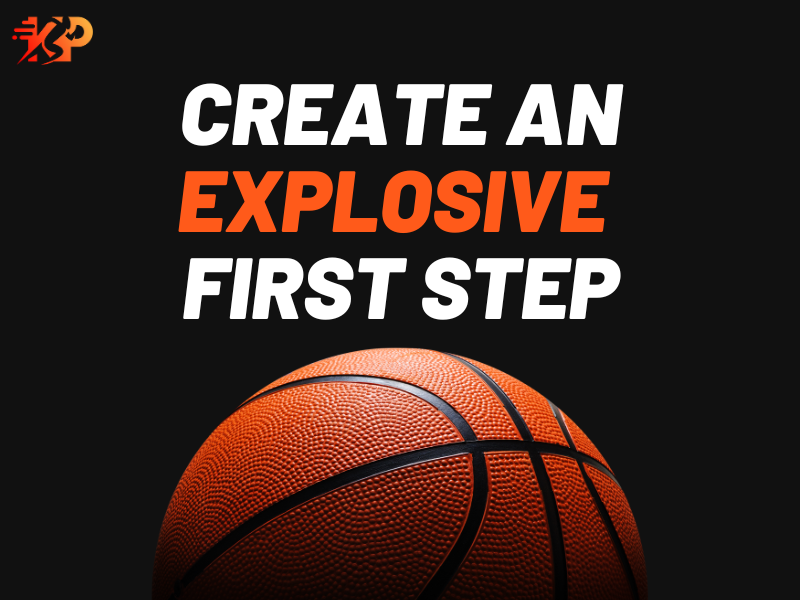Developing Acceleration: For Basketball Athletes

By Mark Keil, CSCS
Posted on September 22, 2024

By Mark Keil, CSCS
Posted on September 22, 2024

Acceleration is a fundamental skill for basketball athletes, impacting every aspect of performance on the court.
Quick and powerful acceleration is necessary to move past a defender, drive to the basket, contest a fast break, or close out on a shooter.
Acceleration is more critical than top-end speed for basketball, as the athlete moves in quick bursts.
This article will explore developing acceleration through targeted training and improving explosiveness, strength, and technique.
Acceleration in Basketball
Basketball is a fast-paced game that requires quick and decisive movements. Athletes rarely reach maximum speeds; players must accelerate rapidly over short distances.
Acceleration helps the athlete separate from a defender, allowing them to drive to the basket. Closing out on shooters, staying in front of an offensive player, and recovering defensively require rapid acceleration.
Biomechanics of Acceleration
To improve acceleration, athletes must first understand the biomechanics behind it.
Accelerating involves generating as much force as possible in the shortest time and transferring that force efficiently through the body.
Critical components of acceleration biomechanics include:
1. Force Production: The ability to generate powerful strides is the foundation of acceleration. Stronger leg muscles—particularly the glutes, hamstrings, and quadriceps—play a vital role in producing force.
2. Stride Length and Frequency: During the acceleration phase, athletes take shorter, more decisive steps than full-speed running. Maximizing stride length and frequency without losing form is essential for adequate acceleration.
3. Forward Lean: In the initial phase of acceleration, athletes should maintain a slight forward lean to help generate horizontal force, driving them forward. As they accelerate, they gradually become more upright.
4. Arm Swing: An explosive arm swing helps maintain balance and rhythm while providing additional propulsion during acceleration. The arms should move in a straight line, not across the body, to maximize forward momentum.
5. Body Positioning: A low center of gravity helps athletes maintain balance and explosiveness during quick movements, allowing for better control over acceleration and deceleration.
Keil Performance is a Tulsa Speed and Agility Training program designed to help athletes create explosive speed. If you’d like to help your basketball athlete improve their speed and agility, then bring them by to try it free!
Fundamental Training Principles for Developing Acceleration
Developing acceleration involves improving both strength and technique.
Below are the fundamental training principles and methods for basketball athletes to boost acceleration speed.
1. Strength Training
Stronger muscles, particularly in the lower body, allow athletes to apply more force to the ground, leading to faster acceleration. Here are a few exercises that develop lower-body strength:
- Front / Back Squats: This exercise targets the quads, glutes, hamstrings, and calves, the primary muscles used during the sprint’s acceleration phase.
- Deadlifts: This compound movement focuses on the posterior chain (hamstrings, glutes, and lower back), crucial for explosive forward movement.
- Lunges: Lunges mimic the single-leg stance that athletes often find themselves in while accelerating and are great for building unilateral leg strength.
- Split Squats: Bulgarian split squats and other split-leg movements help improve the strength and stability needed for powerful strides. (side note: single-leg movements also develop strength to aid in stabilization; this is particularly important in basketball, where quick cuts and turns put extra pressure on the knees).
To build maximum strength, focus on heavy lifts with lower repetitions (3-6 reps per set). Combine strength with plyometric exercises for explosive power (discussed below).
2. Plyometrics
Plyometric exercises focus on developing explosiveness, directly impacting acceleration (and vertical). These exercises train the muscles to generate power quickly, mimicking the burst of speed needed on the basketball court.
- Box Jumps improve vertical power, translating into more explosive forward movement.
- Broad Jumps train the horizontal explosiveness needed to accelerate quickly from a standstill.
- Depth Jumps improve reactive strength and power.
- Lateral Bounds are crucial for developing acceleration in side-to-side movements.
When incorporating plyometrics, focus on maximum effort for each jump, with plenty of rest between sets to ensure quality and explosiveness. (Coach Note: focus on quality over distance and/or height; if the athlete doesn’t know how to absorb the plyometric’s landing (deceleration) correctly, they are more likely to injure themselves.)
3. Sprint Work
Sprinting is one of the most effective ways to improve acceleration.
Short sprints over 5-20 meters (or about 15-60 feet) help the athlete practice applying force quickly. Here are a few sprinting drills to increase acceleration speed in basketball:
- Resisted Sprints: Use resistance bands, weighted sleds, or partner resistance to increase the difficulty of the sprint. Resisted Sprints force the athlete to produce more force, translating to increased acceleration speed.
- Hill Sprints: Running up a slight incline forces athletes to lean forward and drive harder with each step, improving acceleration mechanics.
- Sprint-Stop-Sprint Drills: These drills mimic basketball’s stop-start nature, requiring athletes to accelerate rapidly after a change in direction or from a stationary position.
Incorporate these sprint drills at maximum intensity with proper recovery to ensure optimal speed and technique development.
4. Technique Drills
While strength and explosiveness are vital, refining techniques can significantly improve acceleration.
- Wall Drives: Athletes lean against a wall with one leg forward and alternately drive their knees upward while keeping the body in a forward-lean position. This positioning reinforces proper posture and leg drive during acceleration.
- Falling Starts: Athletes start by standing upright, then lean forward until they naturally fall into a sprinting position. This drill teaches the proper forward lean and body angle for acceleration.
- High-Knee Drills: High-knee running helps athletes focus on rapid leg turnover and reinforces an explosive knee drive, essential for quick acceleration.
Mobility and Flexibility
Maintaining mobility and flexibility is essential for explosive acceleration.
Tight hip flexors, hamstrings, or calves can limit the athlete’s stride length and explosive potential. Incorporating dynamic warm-ups, mobility work, and stretching routines—mainly targeting the hips, ankles, and hamstrings—will enhance range of motion and reduce the likelihood of sport-related injury.
Conclusion
Developing acceleration is necessary for basketball athletes looking to elevate their game.
By focusing on a combination of strength training, plyometrics, sprint drills, and proper technique, players can significantly improve their ability to generate quick bursts of speed in any direction.
If you’re looking for the Best Speed and Agility Training Near You, then sign up your athlete to try the program for FREE!
Training Resources



